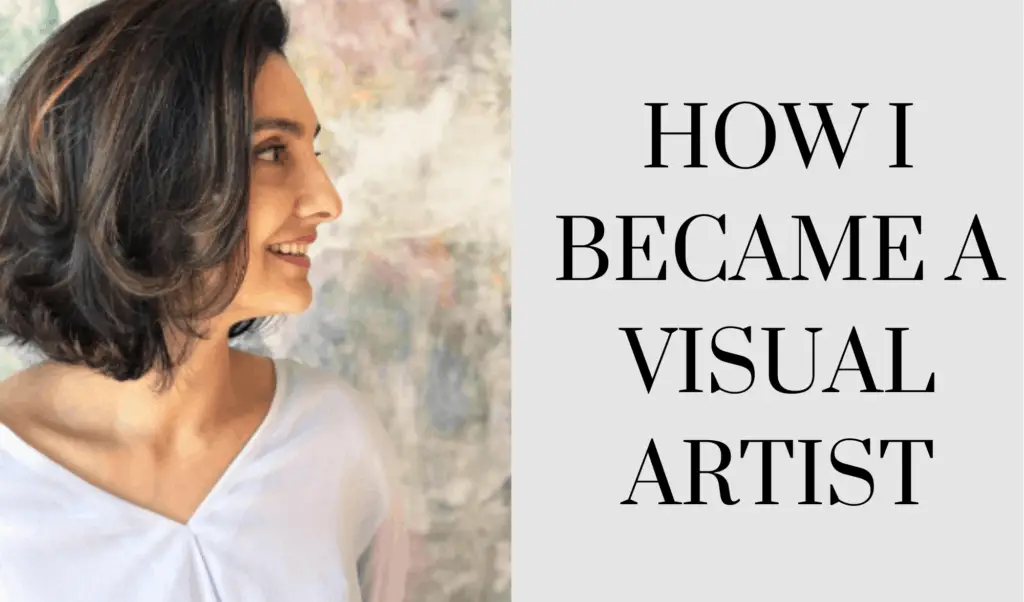
Visual Artist, Educator, and Author
The best advice I was given about looking at the composition of a painting was to block a part of it from my view. By seeing the image without that area or element, it is easier to see why the artist used it in the first place. Time and time again, I chose art-related fields instead of my own art practice. It took me a long time to realize that there are many different ways to be an artist and that you can be more than one thing. It was only when I fully understood what I was missing by not being true to myself that I was able to start.
The bigger picture. At this time, there are so many online art events, talks, and lectures being given by museums, artists, designers, and curators. TATE talks have some interesting interviews, and open content images are increasingly being made available by museums. The more artwork you see, the more dots you can join, and the wider the range of creative ideas you can have. If something catches your eye, take the time to stop and look closely. There is a reason it caught your attention.
Be well informed. I had a terrible informal interview once when I hadn’t updated my knowledge about the qualifications I needed. Embarrassing but valuable.
Build your community. As artists, we often work alone. Now more than ever, take action yourself, virtually, if need be. If you can’t find your own community, build it. Collaboration is a great way to learn from and support others.
Ask for help. While co-authoring an educational book on courage and space, a casual conversation led to a wonderful interview with a NASA astronaut. Many other inspiring people contributed to this project, including Dr. Jane Goodall, the Royal Astronomer, and Alberto Alessi. One big lesson I have learned is that it is always worth asking for help.
Inspiration and slog. Inspiration takes a moment but getting the work done can be a slog. If you have a great idea, mentally prepare for the long haul and stick with it. Every picture you create changes you and makes you stronger for the next one. Understand what can inspire you, so you know where to look.
Being articulate counts. As artists, we feel that our work should speak for itself. In my experience, taking the time to express yourself clearly makes a difference, whether on social media or when writing an artist’s statement.
Financial literacy. Long term, this will stand you in good stead, inform your choices, and help you develop negotiating skills. Be aware of current rates of gallery commissions and other services.
Exposure versus Payment. Only you can make a call on this; sometimes, the connections you make by donating or contributing work can be worth it but make an informed choice.
What’s a job without a liveable planet to work in?
My connection to nature is an important part of my work practice. There are many artists and designers, generating awareness and developing sustainable solutions. You can explore the work of Olafur Eliasson and Thomas Heatherwick if you are interested. Sustainable choices are not always the most economical, but things are starting to change. The idea of the Circular economy developed and promoted by the Dame Ellen MacArthur Foundation https://www.ellenmacarthurfoundation.org/ is gaining traction, as is Kate Raworth’s very accessible ‘Doughnut Economics’ Model https://www.kateraworth.com/doughnut/ which examines ways of creating a safe place within social and planetary boundaries. Robert Macfarlane’s ‘Landmarks’ and ‘Underland’ are must-reads for anyone interested in language, place, and the human-nature connection. There is also the work of Janine Benyus, who has focused on the idea of biomimicry, learning from how nature does things https://biomimicry.org/janine-benyus/. I am in the middle of reading The Overstory by Richard Powers, and next on my list is The Good Ancestor by Roman Krznaric, long term thinking for future generations.
Sara Riaz Khan is an abstract visual artist and educator inspired by nature, color, and the human condition (www.sarakhan.org). Her work explores ideas about shared humanity, transformation, and how the creative process can address the challenges one faces. Sara has co-authored two IB curriculum resources, ‘Interdisciplinary Thinking for Schools: Ethical Dilemmas MYP 1,2 &3’ and ‘Interdisciplinary Thinking for Schools: Ethical Dilemmas MYP 4 & 5’ (Dr. Meredith J.Harbord & Sara Riaz Khan). She is currently collaborating on future projects.
